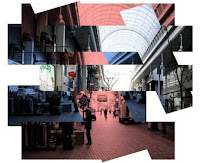Losing purity of form in contemporary architecture
You must have seen bizarre buildings, distorted mega sculptural elements in public places scattered all over the urban fabric. This entire gimmick in the name of creativity and uniqueness!! It’s like; short term YouTube or social media fame. It may grab attention of public for sometime but such architecture or urban design or public landscape elements are not going to sustain for long.
















Though different era of history has witnessed different architectural styles, elements and treatments but fundamentally, beauty of architectural forms have remained timeless and it is timeless indeed. Timeless architectural aesthetics can’t be confined in any time-span or region. Architecture demands a fair representation through lucidity of form with innocence and tenderness of its complex but aesthetic attributes, which is getting lost somewhere in the race of success, uniqueness and technological race. Suddenly so much advancement has taken place in building materials and construction techniques and it appears that architecture has become an experimental ground to execute hidden bizarre instincts of architects who seem to be unable to handle this outburst of Techno-architectural possibilities.



